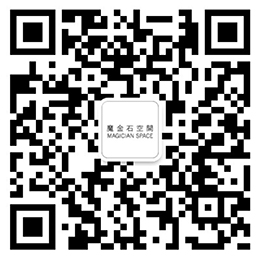News
Jiang Zhi, Trevor Yeung in “Noire Lumière” at HOW Art Museum
Noire Lumière
Exhibition Dates: 2020.11.15 – 2021.04.05
Exhibition Venue: F1, HOW Art Museum (Shanghai)
Artists: Ulla von Brandenburg, Joyce Ho, Jiang Zhi, Nabuqi, Tony Oursler, Laure Prouvost, Bunny Rogers, Hiraki Sawa, Sun Yuan & Peng Yu, Tao Hui, Yang Fudong, Haegue Yang, Yang Jian, Trevor Yeung
Curator: Fu Liaoliao
Associate Curators: Zhanna Khromykh, Wang Ziyao
That night the blind man dreamt that he was blind.
The blind talk about an escape. It is completely false that the darkness there is total or in any way: distressing. With a little adjustment, one succeeds very well in distinguishing a sort of clarity that radiates through the shadows and that is deliciously attractive to the eyes. And this unique perspective could only be attained through recollection after blindness descended, only after a lifetime of hard work and only after the eyes tired.
But nothing, I see nothing.
So we must still wait.
And were there one day to be here, where there are no days, which is no place, born of the impossible voice the unmakeable being, and a gleam of light, still all would be silent and empty and dark, as now, as soon now, when all will be ended, all said, it says, it murmurs.
Excerpted from several texts, the above passages constitute a point of departure of Noire Lumière
“Noire lumière”, first of all, refers to an ambiguous point of time: it may be when day is approaching its end, or dawn is coming or night is in its utmost depth. In other words, noire lumière is a state of fighting and tangling. While day is progressing with escalating potential energy, the time and space it sweeps past feature radicalization of technology, disappearance of aura, disintegration of the body, opposition of discourses, and concentration of power, which further impacts upon the world that has already witnessed frequent outbreaks of disasters. Actually, the fact that we are able to describe the world of today in such definite and unambiguous words indicates a kind of blindness incurred by the excessive clarification. And this blindness signifies the missing of the Other and the erasing of marginal space. “Space becomes transparent when it is smoothed out and leveled. Thresholds and transitions are zones of mystery and riddle – here, the atopic Other begins.” (Byung-Chul Han, 2017)
Noire Lumière as exhibition does not intend to summon once again the “aura” under such a context. Instead, it suspends the come-back of darkness within a precarious scenario and weaves the works on show organically to create an overarching context, opening it up to embrace all the impossibilities of the Other. Under such a “reverse context”, the exhibition consists of two intertwined clues – “noire lumière” and “noire lumière archive”, which collectively invite audience into a field connected by a series of marginal spaces.
“Noire lumière” is an activation of the heterogeneity. While the eyes are blinded by the piercing dazzle of the day, other senses are intuitively awakened. At this point, eyes are not the only channel to see, and “seeing” is not the only mission (or destiny) of eyes. In My Name Is Red, Orhan Pamuk presented a way to explain red to somebody who was blind and hence had never known red: “If we touched it with the tip of a finger, it would feel like something between iron and copper. If we took it into our palm, it would burn. If we tasted it, it would be full-bodied, like salted meat. If we took it between our lips, it would fill our mouths. If we smelled it, it’d have the scent of a horse. If it were a flower, it would smell like a daisy, not a red rose.” Senses mobilized by “noire lumière”, indeed, also sneak in between memory, dreamland, even terror and absent-mindedness; but they do not refer to mysticism and all that unknown and therefore roughly categorized in its name.
Eyes that are disconnected from the body system due to blindness mobilize not only other senses but also the inconspicuous traces emitted by the symptoms caused collectively by day and night. Such mobilization, in a sense, could be deemed as a searching for the missing. “Noire lumière archive” is in effect the action to take “noire lumière” away from mystical conjectures, to make the nameless hidden in the dark and the unseen on the verge of disappearance visible. The memories, hearsays, ambiguous records and complete silence that are to be mobilized, rather than probing between the rationalities of “reality” and “fiction”, manage to detach themselves from the lonely dualistic inquiries. Such detachment mirrors exactly power/grand narrative’s deprivation of their right to be archived. “Noire lumière archive” endeavors to connect and reveal these lonely inquiries. These lonely inquiries are shareable and represent a two-way movement. On the one hand, they stand for a detour and escape from the power mechanism; and on the other, they signify the infinite approach to the impossible Other. Within in this movement, history manages to realize itself.
It is such a movement that makes “noire lumière” a decisive point of time – the becoming of the impossible. As this point of time constantly emerges in the state of fighting and tangling, to fight or to disappear? Who to fight and who to disappear?
“But the question remains: How to make things that will eventually be gone disappear?” (Blanchot, 1969)
Let the question remain suspending. Let it constantly emerge and reemerge.
